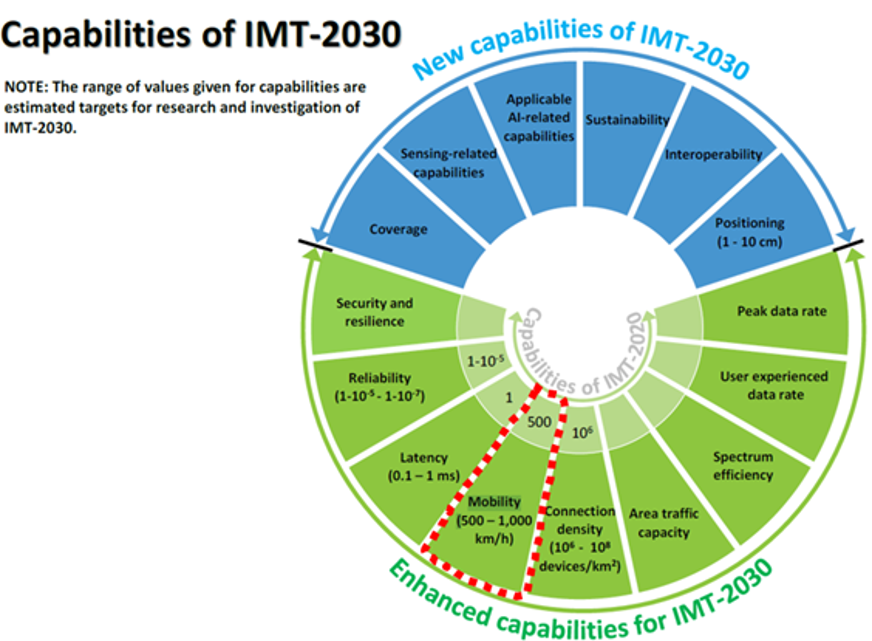Report ITU-R M.2520 – Use of the terrestrial component of IMT for the Cellular-Vehicle-to-Everything (11/2022, WP 5D)
This report explores the relationship between IMT technologies in terrestrial networks and Cellular-Vehicle-to-Everything (C-V2X), highlighting how IMT functions support various V2X use cases. It focuses on the capabilities of IMT technologies available to mobile network users for V2X support and addresses situations without network coverage. The report covers V2X use cases supported by IMT, the necessary characteristics of terrestrial networks, and the connection between IMT technologies and C-V2X. Additionally, it includes a case study on V2X use cases in different scenarios supported by eMBB, mMTC, and URLLC.
Recommendation ITU-R M.2160* – Framework and overall objectives of the future development of IMT for 2030 and beyond
(11/2023, WP 5D)
This Recommendation describes a framework and overall objectives for the development of the terrestrial component of International Mobile Telecommunications (IMT) for 2030 and beyond (IMT-2030). IMT is expected to continue to better serve the needs of the networked society, for both developed and developing countries in the future.
In this Recommendation, the framework of the development of IMT-2030, including a broad variety of capabilities associated with envisaged usage scenarios, is described. Furthermore, this Recommendation addresses the objectives for the development of IMT-2030, which includes further enhancement and evolution of existing IMT. Aspects of interworking with other networks are also addressed.

In the ITU-R section and explicitly quote capability 6 (“Mobility”): “Maximum speed, at which a defined QoS and seamless transfer between radio nodes which may belong to different layers and/or radio access technologies (multi-layer/multi-RAT) can be achieved. The research target of mobility could be 500 – 1 000 km/h”.
______________________
* application no limited to ITS